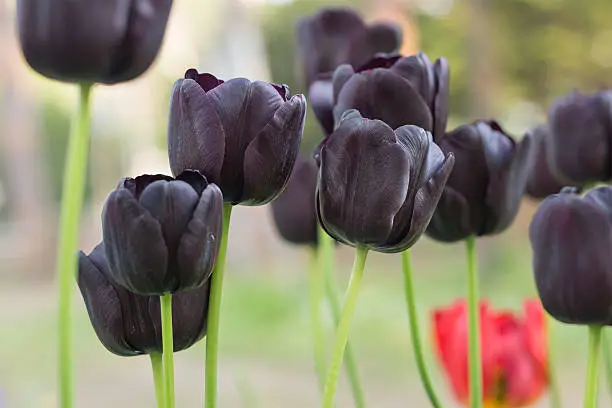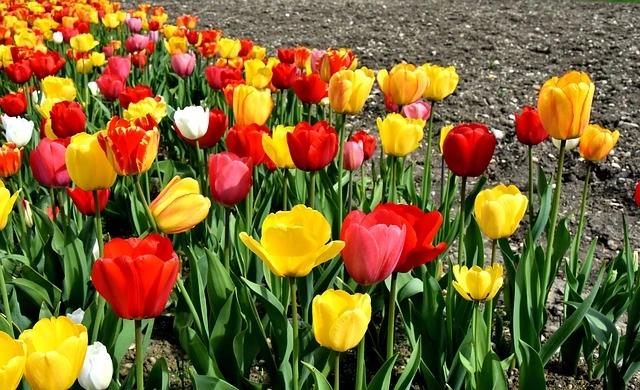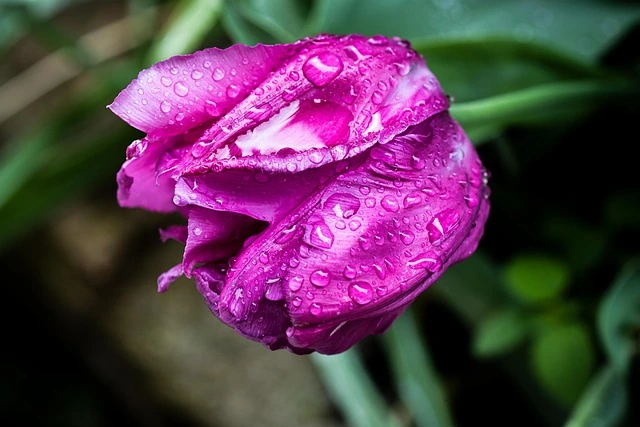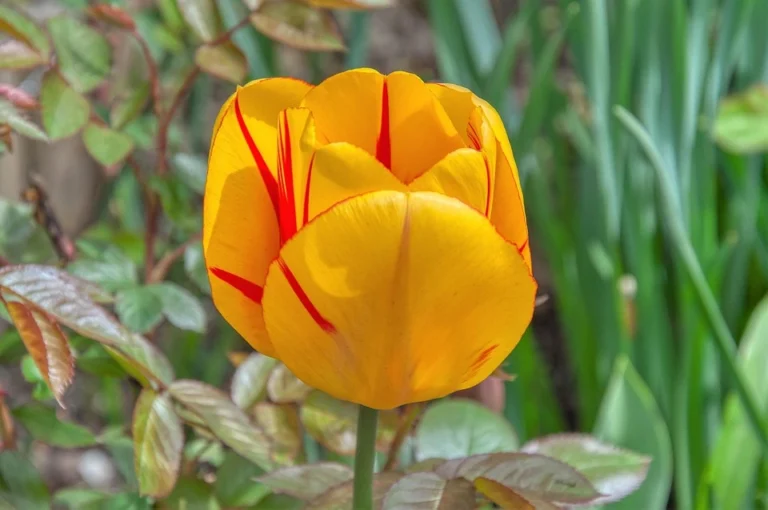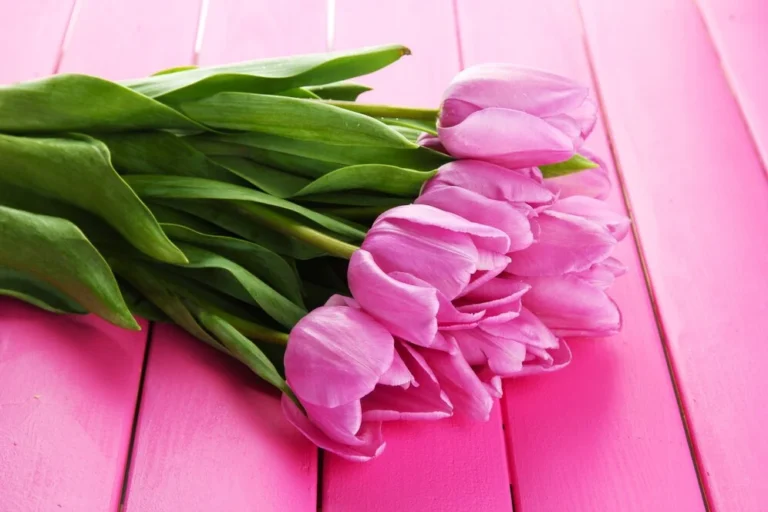The Alluring Beauty of White Tulips: A Complete Guide to Growing, Styling, and Appreciating These Elegant Blooms
Table of Contents
Have you ever wondered why white tulips are considered among the most versatile and symbolic flowers in both garden design and floral arrangements? Despite being less colorful than their vibrant counterparts, white tulips consistently rank among the top 10 most sought-after bulbs, with over 3.2 million white tulip bulbs imported to the US annually.
White tulips bring a touch of elegance and simplicity to any garden or bouquet. Their pristine appearance makes them incredibly versatile for various occasions, from weddings to memorial services, while also serving as stunning focal points in landscape design. This comprehensive guide explores everything you need to know about these magnificent blooms, from their rich history to practical growing tips and creative display ideas.
The Fascinating History of White Tulips
White tulips have a storied past dating back to the 16th century Ottoman Empire, where they were highly prized for their purity and elegance. During the famous “Tulip Mania” in the Netherlands in the 1630s, white tulips were among the most valuable varieties, sometimes fetching prices equivalent to the cost of a luxurious Amsterdam canal house.
The white tulip’s scientific name, Tulipa, comes from the Persian word “tulipan,” meaning turban, referring to the flower’s shape. Throughout history, white tulips have symbolized purity, forgiveness, and new beginnings across various cultures.
Popular White Tulip Varieties
Several white tulip varieties stand out for their unique characteristics:
- White Triumphator – A lily-flowered variety with elegant pointed petals
- Mount Tacoma – A peony-flowered double tulip with lush, full blooms
- White Marvel – A fringed variety with delicate, feathery petal edges
- White Emperor (also known as Purissima) – An early-blooming single tulip
- White Dream – A late-flowering variety with perfect cup-shaped blooms
Each variety offers slightly different characteristics, from bloom time to height and petal shape, allowing gardeners to create diverse displays using only white tulips.

Growing White Tulips Successfully
White tulips thrive under specific conditions. Follow these tips for successful cultivation:
Planting Time and Location
Plant white tulip bulbs in fall, approximately 6-8 weeks before the ground freezes. Choose a location with full to partial sun exposure and well-draining soil. White tulips particularly shine when planted against dark backgrounds like evergreens or in mass plantings where their pristine color creates dramatic impact.
Soil Preparation and Planting Depth
White tulips prefer slightly alkaline soil with a pH between 6.0 and 7.0. Plant bulbs at a depth of 6-8 inches (three times the height of the bulb) and space them 4-6 inches apart. Add bulb fertilizer to the soil before planting to encourage strong spring growth.
Watering and Maintenance
After planting, water thoroughly to settle the soil around the bulbs. During the growing season, white tulips require moderate watering – about one inch per week if rainfall is insufficient. Once blooming is complete, allow foliage to yellow and die back naturally to ensure energy returns to the bulbs for next year’s display.

Showcasing White Tulips in Garden Design
White tulips offer exceptional versatility in garden design:
- Moonlight Gardens – Create enchanting evening gardens where white tulips reflect moonlight and glow in twilight hours
- Formal Gardens – Use their clean lines and uniform appearance for structured designs and symmetrical patterns
- Mixed Perennial Beds – Plant among emerging perennials to provide spring interest while other plants develop
- Container Displays – Layer white tulips with muscari or forget-me-nots for striking spring containers
Professional garden designers often incorporate white tulips as “palette cleansers” between more colorful garden sections, creating visual pauses that enhance the overall composition.
White Tulips in Floral Arrangements
White tulips excel in both simple and elaborate floral designs:
- Solo Arrangements – A single variety in a clear glass vase offers minimalist elegance
- Bridal Bouquets – Their symbolism of purity and new beginnings makes them perfect for weddings
- Mixed Arrangements – They provide structure and brightness when combined with greenery or colorful blooms
- Special Events – Their neutral color complements any color scheme for events
To extend vase life, cut stems at a 45-degree angle, remove lower leaves, and change water every two days. Adding a teaspoon of sugar and a few drops of bleach to the water can help white tulips remain fresh for up to 7-10 days.
Frequently Asked Questions About White Tulips
Q: Do white tulips return year after year?
Most tulips, including white varieties, gradually decline after the first year. For reliable blooms, treat them as annuals or implement specialized care techniques like deep planting and fertilizing after blooming to encourage perennialization.
Q: When is the best time to cut white tulips for arrangements?
Cut white tulips when the buds are colored but not fully open. Morning cutting is ideal when stems are fully hydrated, and the flowers will continue to grow and open in the vase.
Q: How can I prevent white tulips from flopping in arrangements?
To minimize the natural curving of tulip stems, wrap the arranged stems firmly but gently in paper and place in cool water for a few hours before displaying. Additionally, using a tall, narrow vase provides better support.
Q: Are there any companion plants that particularly complement white tulips?
Blue forget-me-nots, purple muscari, and soft green euphorbias create stunning contrasts with white tulips. For later-blooming varieties, pair with emerging hostas or ferns whose unfurling leaves add textural interest.
Q: How do I protect white tulips from pests?
Apply animal repellents around planting areas to deter squirrels and rabbits. For smaller gardens, covering newly planted areas with chicken wire until sprouts emerge can prevent bulb theft by rodents.
Conclusion: The Timeless Appeal of White Tulips
White tulips continue to captivate gardeners and floral enthusiasts with their pristine elegance and versatility. Whether used as dramatic mass plantings, sophisticated garden accents, or stunning floral arrangements, these blooms bring a sense of refined beauty to any setting. Their symbolic associations with new beginnings and purity further enhance their appeal for special occasions and meaningful garden designs.
By following the growing guidelines and design suggestions outlined above, you can successfully incorporate these classic flowers into your garden or home décor. With minimal investment and moderate care, white tulips offer maximum impact and a touch of timeless sophistication that few other flowers can match.

